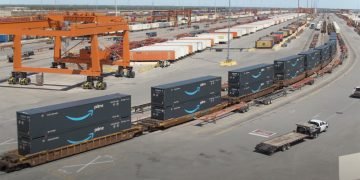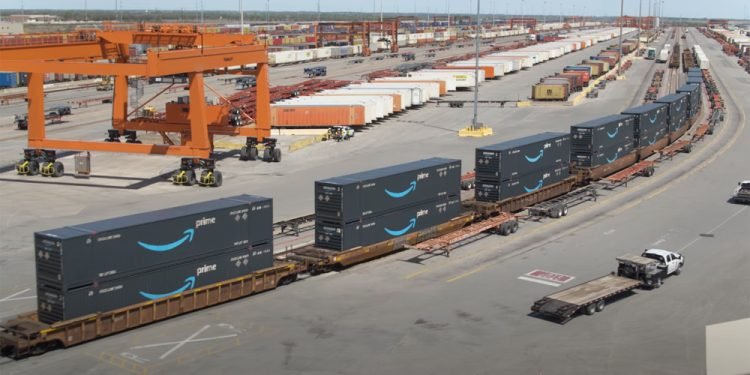In a move signalling a potential shift in its logistics strategy, retail giant Amazon is dipping its toes into the world of rail freight. The company recently announced a pilot program partnering with BNSF Railway to transport goods via train on specific routes within the United States. This move comes amidst ongoing concerns about the trucking industry, including driver shortages and rising fuel costs.
Why Rail Freight for Amazon?
- Addressing Bottlenecks: The trucking industry continues to grapple with a shortage of qualified drivers, leading to delays and rising transportation costs. Utilizing rail freight could offer Amazon an alternative solution for moving bulk goods over longer distances.
- Fuel Efficiency: Rail transportation boasts significantly higher fuel efficiency compared to trucks, potentially leading to a more sustainable and cost-effective way to move certain products.
- Complementing Existing Network: Adding rail to its logistics network can provide Amazon with greater flexibility and resilience, allowing them to optimize transportation based on factors like distance, cost, and cargo type.
The Pilot Program:
Details about the pilot program are limited, but reports suggest it will focus on specific routes within the US, likely connecting major distribution centers. This initial trial will allow Amazon to assess the feasibility and benefits of integrating rail freight into its broader logistics strategy.
Potential Impact and Challenges:
- Reduced Reliance on Trucks: If successful, this pilot could pave the way for Amazon to move a larger portion of its freight via rail, potentially easing pressure on the trucking industry while also benefiting from potential cost savings and fuel efficiency gains.
- Integration Challenges: Integrating rail into existing logistics infrastructure can be complex, requiring adjustments to warehouse operations and potentially longer lead times compared to direct truck delivery.
- Limited Flexibility: Unlike trucks, trains operate on fixed routes and schedules, which could limit flexibility for time-sensitive deliveries or last-minute order fulfillment.
A Look Ahead:
While the pilot program is a small step, it represents a significant shift for Amazon and could mark the beginning of a larger move towards rail freight. The success of this program will depend on several factors, including cost efficiencies, operational adjustments, and the ability to maintain timely delivery standards. Nonetheless, this development highlights the growing importance of diversified logistics strategies within the ever-evolving landscape of the e-commerce industry.























